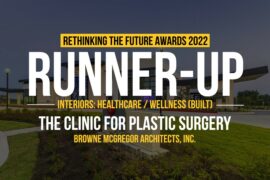Second Award | Institutional
Project Info
Participant Name: Leland Julia Markey Jobson
University: Pratt Institute
Country : United States
Details
Senior Living made cute
Cutening” as an architectural tool exaggerates the proportional relationships of building volume to conceal the functional reading through other imagery. As a result, part to whole logics are not inwardly relational (beam to column to floor) but outwardly relational (beer gut). Through “cutening” the retirement home program, we propose a new relationship with the elderly and architecture where the aging occupant and the building form act together as one stronger body.
We propose a symbiotic relationship with architecture as the physical means of a person dwindles. What would it mean to hug an extending arm, instead of grabbing onto a handrail? As estrangement ensues from the images of the functional necessities of being an adult in care, building form is estranged from elements of assembly. The project spawned from an inquiry of the anthropomorphic properties of food shacks in Los Angeles. Formally and functionally, they are attempts at architecture acting like a body. Besides being proportionality akin to the infant body, one occupies the shack from outside, ordering through a window require one to speak with it. Like bodies, they have a formal clarity suggests volumetric parts rather than tectonic assemblies.
Designed for the body in decline, retirement communities are typically designed from the standpoints of efficiency and liability, causing communities to look and operate like hospitals. To prevent seizures, a common threat to the elderly, senior living environments avoid contrast. Moreover, hard edges of interior and exterior geometry have to be faded with desaturated coloration to counter the visual differences between folds in walls. Our architectural inquiry is the pliant manipulation of the structural shell where ripples, bulges and folds have consequences of structure, space, and texture. Hard tectonic qualities of seaside structure and concrete material are overridden with pliant and comfortable identities – plush fabrics of concrete.
Our proposal consists of three porous, exoskeletal, unconditioned “bodies” whereby conditioned and programmed “parts” are embedded. The bodies wholly read as sea creatures and thus work as a negotiation between the scale and part-to-whole relationships of programmatic elements, a nod to the nautical theme of the beachside community, and a play on the way that we starkly cutify sea creatures in our cultural depictions. They are aptly named Orca Springs, Harbor Guppies, and Coral Ridges. The identities of biological parts are used as indices for remembering programs and experiences, and subsequently orient its inhabitants.
[/tab]
[/tabs]
If you’ve missed participating in this award, don’t worry. RTF’s next series of Awards for Excellence in Architecture & Design – is open for Registration.
[button color=”black” size=”medium” link=”httpss://www.re-thinkingthefuture.com/awards/” icon=”” target=”false”]Participate Now[/button]
[g-gallery gid=”3659″]





